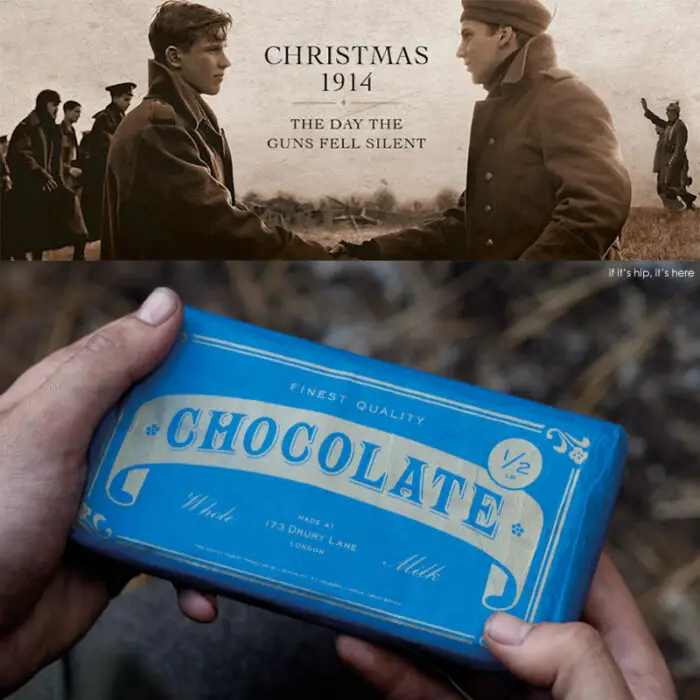Blog and website headlines are screaming “This is the Christmas Ad to beat this year.” and ‘Sainsbury’s Outdoes John Lewis’ Monty The Penguin.” when referring to this emotional – and controversial – three and a half minute holiday ad for the grocery store chain.
Sainsbury’s Christmas Truce Ad
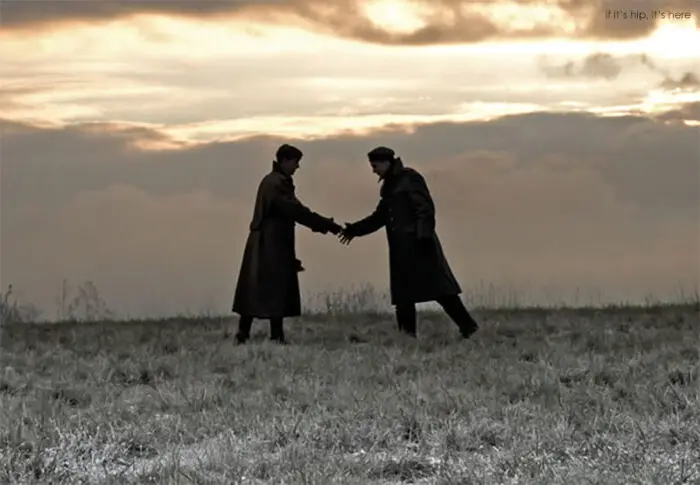
Before you go screaming that this ad is a rip-off of Paul McCartney’s 1983 music video for Pipes of Peace or seems reminiscent of scenes you have viewed in movies, books and television (even an Opera), it most certainly is. That’s because they were all inspired by what is referred to as “The Christmas Truce.”
Personally, I did not find it nearly as moving as the John Lewis’ Monty the Penguin advert, because I found it very predictable given the reference. I knew how it would end and where it was going, unlike the John Lewis ad.
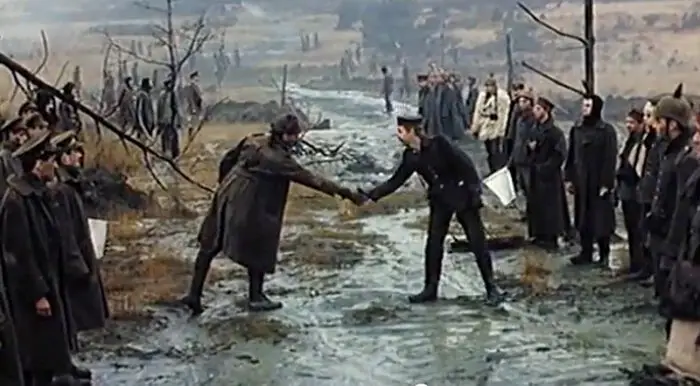
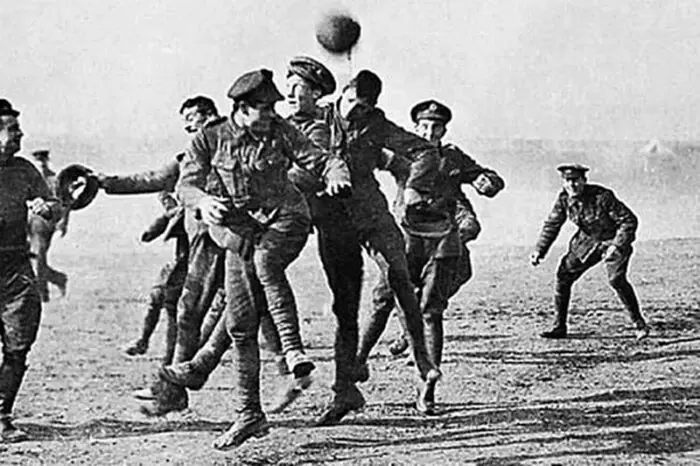
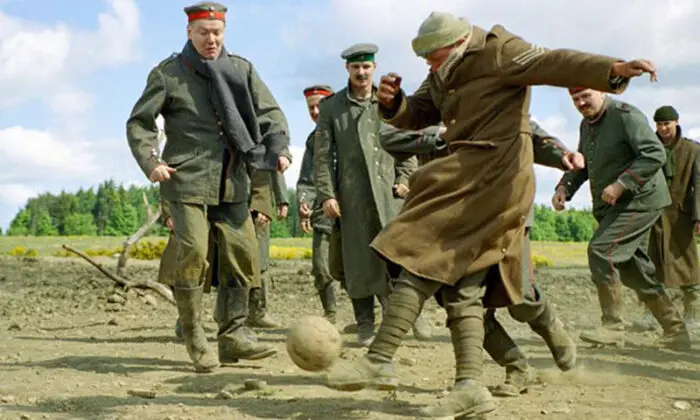
Sainsbury’s Christmas Truce ad
The Sainsbury’s ad, made in partnership with The Royal British Legion and described as “inspired by real events from 100 years ago,” is signed off with the hashtag “Christmas is for sharing.” The ad commemorates the true* events of Christmas Day, 1914, when the guns fell silent and two armies met in no-man’s land, sharing gifts – and even playing football (soccer) together.
The legend of The Christmas Truce is true.
*According to Snopes:
During World War I, in the winter of 1914, on the battlefields of Flanders, one of the most unusual events in all of human history took place. The Germans had been in a fierce battle with the British and French. Both sides were dug in, safe in muddy, man-made trenches six to eight feet deep that seemed to stretch forever.
All of a sudden, German troops began to put small Christmas trees, lit with candles, outside of their trenches. Then, they began to sing songs. Across the way, in the “no man’s land” between them, came songs from the British and French troops. Incredibly, many of the Germans, who had worked in England before the war, were able to speak good enough English to propose a “Christmas” truce.
The British and French troops, all along the miles of trenches, accepted. In a few places, allied troops fired at the Germans as they climbed out of their trenches. But the Germans were persistent and Christmas would be celebrated even under the threat of impending death.
According to Stanley Weintraub, who wrote about this event in his book, Silent Night, “signboards arose up and down the trenches in a variety of shapes. They were usually in English, or – from the Germans – in fractured English. Rightly, the Germans assumed that the other side could not read traditional gothic lettering, and that few English understood spoken German. ‘YOU NO FIGHT, WE NO FIGHT’ was the most frequently employed German message. Some British units improvised ‘MERRY CHRISTMAS’ banners and waited for a response. More placards on both sides popped up.”
A spontaneous truce resulted. Soldiers left their trenches, meeting in the middle to shake hands. The first order of business was to bury the dead who had been previously unreachable because of the conflict. Then, they exchanged gifts. Chocolate cake, cognac, postcards, newspapers, tobacco. In a few places, along the trenches, soldiers exchanged rifles for soccer balls and began to play games.
It didn’t last forever. In fact, some of the generals didn’t like it at all and commanded their troops to resume shooting at each other. After all, they were in a war. Soldiers eventually did resume shooting at each other. But only after, in a number of cases, a few days of wasting rounds of ammunition shooting at stars in the sky instead of soldiers in the opposing army across the field.
For a few precious moments there was peace on earth good will toward men. All because the focus was on Christmas. Happens every time. There’s something about Christmas that changes people. It happened over 2000 years ago in a little town called Bethlehem. It’s been happening over and over again down through the years of time.
This week, Lord willing, it will happen again.
While some are whining that the exploitation of this event to sell product (Hello? Welcome to advertising) at least the chocolate bar featured in the ad, which you can buy now at Sainsbury’s, has profits (50p per bar) going to benefit the past and present armed forces and their families who served in The Royal British Legion**.
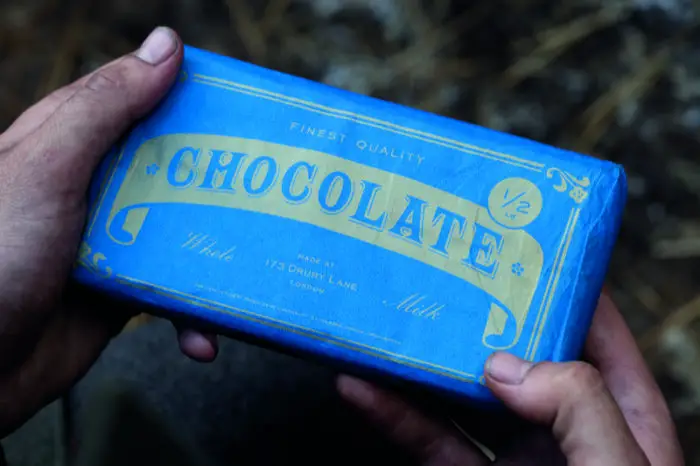
above: The chocolate bar is available while stocks last. Subject to availability. Excludes online.
In this three minute documentary, Sainsbury’s shares the story behind the ad:
And here you can watch the making of it:
**The Royal British Legion. Registered Charity No. 219279
Sainsbury’s
Sources:
Brown, Malcolm and Shirley Seaton. Christmas Truce: The Western Front December 1914. London: Trans-Atlantic Publications, 1984.ISBN 033-03906-5-1. Keegan, John. The First World War. New York: Alfred A. Knopf, 1998. ISBN 0-375-40052-4. Weintraub, Stanley. Silent Night: The Story of the World War I Christmas Truce.New York: The Free Press, 2001. ISBN 0-684-87281-1. Weintraub, Stanley. “Amid Mud and Blood, Christmas Won Out.” Los Angeles Times 24 December 2003 (p. B11). The Christmas Truce (FirstWorldWar.com) 1914 (https://www.1914.org) and Christmas Truce (https://www.christmastruce.co.uk/football.html)
